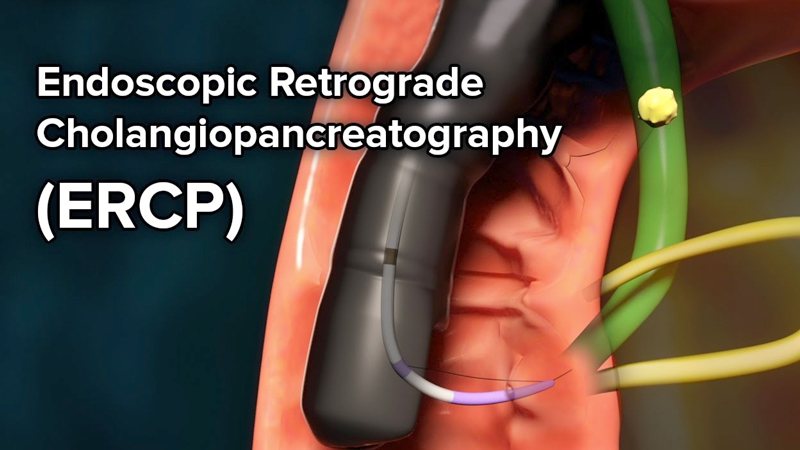
ERCP
Endoscopic Retrograde Cholangiopancreatography (ERCP) is a specialized medical procedure used to diagnose and treat conditions affecting the bile ducts, pancreatic duct, and gallbladder. It combines endoscopy and X-ray imaging techniques to examine and treat problems related to these structures.
During an ERCP, a long, flexible tube called an endoscope is inserted through the mouth, down the esophagus, and into the stomach and duodenum (the first part of the small intestine). A smaller tube called a catheter is then inserted through the endoscope and guided to the area where the bile duct and pancreatic duct drain into the duodenum. Contrast dye is injected through the catheter, which helps to visualize the ducts on X-ray images.
ERCP is commonly used to diagnose and treat conditions such as:
ERCP can be used to remove gallstones that are stuck in the bile ducts.
2. Biliary strictures: Narrowing of the bile ducts can be diagnosed and sometimes treated during ERCP.
3. Pancreatitis: ERCP can help diagnose the cause of pancreatitis and sometimes treat it by removing blockages in the pancreatic duct.
4. Tumors: ERCP can be used to obtain tissue samples (biopsies) from tumors or to place stents to relieve blockages caused by tumors.
ERCP is typically performed under sedation to make the patient more comfortable. It can be an effective and minimally invasive way to diagnose and treat certain gastrointestinal conditions, but like any medical procedure, it carries some risks, including pancreatitis, infection, bleeding, and perforation of the gastrointestinal tract. Therefore, it's important for patients to discuss the risks and benefits of ERCP with their healthcare provider before undergoing the procedure.
